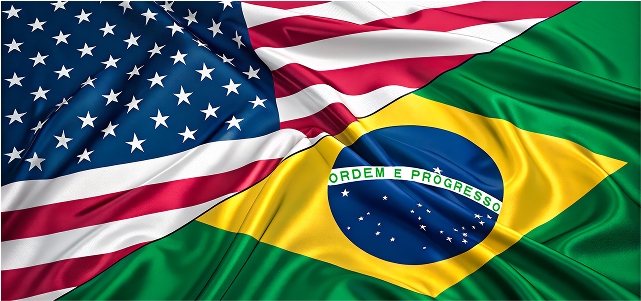Bilingual Education in the U.S
A Niche Shaped by Brazilian Roots
Portuguese-English
In the United States, bilingual education often conjures images of Spanish-English classrooms, reflecting the nation’s largest linguistic minority. Yet, a quieter but growing segment—Portuguese-English bilingual education—hints at an underserved niche, driven largely by the Brazilian diaspora. As of 2025, the U.S. hosts a vibrant Brazilian community of over 1 million, with significant pockets in Florida, Massachusetts, and New Jersey. Despite this presence, private schools offering Portuguese-English bilingual programs remain scarce, raising questions about cultural preservation, educational access, and untapped potential.
The Brazilian Influence
The Brazilian community’s impact on the U.S. is undeniable. In Florida alone, over 100,000 Brazilians call the state home, concentrated in Miami’s “Little Brazil” and Orlando’s tourism-driven enclaves. Massachusetts boasts another hub, with Framingham dubbed the “Brazilian capital of New England,” while New Jersey’s Newark Ironbound neighborhood thrives with Portuguese-speaking vibrancy. These communities bring cultural richness—think Carnaval celebrations and churrascarias—alongside economic contributions, from tourism (Brazilians once topped 1 million annual visitors pre-pandemic) to trade (Florida-Brazil commerce exceeds $18 billion annually).
For Brazilian families, education is a bridge between heritage and opportunity. Parents often seek schools where their children can master English—crucial for success in the U.S.—while retaining Portuguese fluency to stay connected to their roots. This dual aspiration fuels demand for bilingual education, yet the private school market has been slow to respond.
The State of Portuguese-English Bilingual Schools
Across the U.S., explicit Portuguese-English bilingual private schools are rare. In Florida, where the Brazilian population could justify such programs, schools like Sagemont Preparatory in Weston or Gulliver Preparatory in Miami offer international curricula but lack dedicated Portuguese tracks. Orlando Montessori Bilingual Academy, serving young learners, focuses primarily on Spanish-English, though its flexibility might allow Portuguese if pressed by families. In Miami, the absence of a flagship Portuguese-English private school stands out, given the city’s role as a Latin American gateway.
Elsewhere, the picture is similar. Massachusetts, with its Brazilian-heavy Framingham and Lowell areas, has no widely recognized private Portuguese-English option. New Jersey’s Ironbound, despite its Portuguese-speaking history (shared with Portuguese and Brazilian immigrants), leans on public efforts like after-school language programs rather than private bilingual schools. Nationally, the International Charter School in Pawtucket, Rhode Island, stands out as a public model, offering Portuguese-English immersion for grades K-5, but it’s an outlier—and not private.
Why the gap? Experts point to several factors. Spanish-English programs dominate due to larger Hispanic populations—22% of U.S. students versus 1% Portuguese-speaking. Private schools, often driven by market demand, prioritize languages with broader appeal. Additionally, a shortage of qualified Portuguese-speaking teachers hampers expansion, mirroring broader bilingual education challenges noted in a 2023 Century Foundation report.
Public vs. Private: A Telling Contrast
Public schools offer clues to what’s possible. In Florida, Broward County’s dual-language programs occasionally include Portuguese, reflecting Brazilian influence in Pompano Beach (home to roughly 7,000 Brazilians). Massachusetts’ King Open School in Cambridge runs the Olá Program, a K-5 Portuguese-English immersion initiative. These public efforts show demand exists—50,200 U.S. students reported Portuguese as their home language in 2021, per the National Center for Education Statistics. Yet, private schools, which could offer tailored, premium bilingual experiences, haven’t followed suit.
The contrast highlights a missed opportunity. Private institutions often cater to affluent or internationally minded families, a demographic that includes many Brazilian immigrants. A Portuguese-English program could attract not just Brazilians but also students eyeing global careers—Brazil’s economy ranks among the world’s top ten.
Voices of the Community
On social media, Brazilian parents in the U.S. express frustration and hope. A Miami mother recently posted on X, “My kids need Portuguese to talk to their avós [grandparents], but schools here only push Spanish.” Another in Orlando wrote, “We’d pay for a private school that teaches both—why isn’t it an option?” These sentiments echo a 2023 UCLA Civil Rights Project report advocating bilingual education as a standard, citing benefits like faster English acquisition, higher test scores, and stronger cultural identity.
The Road Ahead
The Brazilian community’s growing footprint—bolstered by a record 28,050 Green Cards issued in 2023—suggests this niche could expand. Private schools might take cues from public successes or international models like Tessa in Hoboken, New Jersey, which adapts to parental demand. In Miami, a visionary school could blend Portuguese-English immersion with the city’s global flair, tapping into Brazilian pride and Florida’s economic ties to South America.
For now, the story of Portuguese-English bilingual education in the U.S. is one of potential unmet. The Brazilian diaspora has laid the groundwork—culturally, economically, and demographically. Whether private schools seize this chance remains an open question, but one thing is clear: in a nation of linguistic diversity, Portuguese deserves a louder voice in the classroom.



